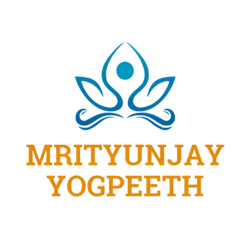Namaste and a warm welcome to this sacred journey of inner purification and yogic wisdom. I am Aniruddh Gurupratap Singh, and it brings me immense joy to introduce you to the ancient science of Shatkarma. At Mrityunjay Yogpeeth, nestled in the spiritual heartland of Rishikesh, our mission is to preserve and share the traditional teachings of classical yoga as handed down by the ancient sages.
In the path of yoga, cleansing the body is not a luxury—it is a necessity. A clear vessel can carry divine energy with greater ease, and Shatkarma, the six cleansing practices of Hatha Yoga, is the process of preparing that vessel. These powerful techniques not only purify the physical body but also unlock the hidden potential of the mind and spirit.
In this comprehensive guide, you will discover the six foundational kriyas of Shatkarma—Neti, Dhauti, Nauli, Basti, Kapalbhati, and Trataka—each presented with step-by-step instructions, detailed preparation, and guidance on safe practice. Whether you’re a beginner or an experienced yogi, this guide will illuminate the path of inner transformation.
Let us begin.
1. What is Shatkarma?
The term Shatkarma comes from the Sanskrit words: “Shat“, meaning six, and “Karma“, meaning actions or techniques. Together, Shatkarma refers to the six yogic cleansing techniques that form a vital part of traditional Hatha Yoga practice.
These are not just physical exercises. They are deep purification techniques designed to cleanse the body from within, balancing the systems that regulate health, energy, and consciousness. The primary aim is to remove toxins (āma) and open the pathways for prāṇa (life force) to flow freely.
The science of Shatkarma is rooted in revered ancient yogic texts such as:
- Hatha Yoga Pradipika (15th century CE)
- Gheranda Samhita
- Shiva Samhita
In the Gheranda Samhita, Shatkarma is listed as the first of the seven limbs (Sapta Sadhanas) of Yoga, which lays the foundation for higher spiritual practices like asana, pranayama, and dhyana.
Shatkarma also shares principles with Ayurveda, the sister science of Yoga. According to Ayurveda, illness and imbalance arise when the three doshas—Vata, Pitta, and Kapha— are disturbed. Shatkarma plays a vital role in restoring this balance, especially by removing blockages in the digestive and respiratory systems.
With regular and mindful practice, Shatkarma enhances your physical vitality, mental clarity, and spiritual awakening.
2. Historical Background and Origin
The origins of Shatkarma can be traced back thousands of years to the ancient yogis and rishis of India who dedicated their lives to mastering the human mind-body system. These pioneers understood that without a purified system, one cannot attain higher states of consciousness.
Among the earliest references, the Hatha Yoga Pradipika, written by Swami Swatmarama in the 15th century, describes Shatkarma as essential for preparing the body for pranayama and meditation. Swatmarama emphasises that without internal cleansing, spiritual practice remains superficial:
“Without purification (Shuddhi), the body cannot attain success in Yoga. Hence, purification must be done first.”
Another classical text, the Gheranda Samhita, presents Shatkarma as part of a structured spiritual path. It identifies Shatkarma as the first step (Shodhana) in the seven limbs of yoga, which include purification, strengthening, steadying, calming, lightening, perception, and isolation.
In ancient times, yogis practised these kriyas to:
- Detoxify their systems before undertaking long fasts or silence.
- Achieve mastery over bodily functions in extreme climates and isolation.
- Deepen their meditation and increase control over the breath (pranayama).
The purpose was not just health—it was liberation. To still the mind, one had to cleanse the body.
Today, the teachings of Shatkarma remain profoundly relevant, helping us navigate a modern world filled with toxins, stress, and mental agitation. At Mrityunjay Yogpeeth, we honour these ancient practices by teaching them with both reverence and scientific understanding, ensuring they remain safe and transformative for modern practitioners.
3. Purpose of Shatkarma
Shatkarma serves a multi-dimensional purpose, acting as the groundwork for all other yogic practices. While it is most often associated with physical detoxification, its benefits penetrate much deeper—impacting the mental, emotional, and energetic layers of our being.
a. Internal Hygiene for the Body and Mind
Just as a gardener prepares the soil before planting seeds, a yogi must cleanse the inner body to allow spiritual seeds to take root. Shatkarma purifies the digestive tract, nasal passages, lungs, colon, and sensory organs—removing toxins, blockages, and waste.
b. Removal of Toxins (Āma)
In both Yoga and Ayurveda, āma refers to undigested residues that accumulate in the body due to poor diet, lifestyle, or stress. These toxins clog the channels of energy (nāḍis) and disturb the body’s natural balance. Shatkarma eliminates āma, allowing agni (digestive fire) to function optimally.
c. Balancing the Doshas
By clearing the systems, Shatkarma brings balance to the three doshas:
- Vata (air + space): governed by movement and communication.
- Pitta (fire + water): governs digestion and transformation.
- Kapha (earth + water): controls structure and immunity.
Each kriya targets specific doshic imbalances, thus promoting holistic wellness.
d. Preparing for Higher Practices
Before you can sit in dhyana (meditation) or control prāṇa (breath) effectively, your body must be stable and light. Shatkarma builds this foundation by:
- Increasing lung capacity
- Improving digestion
- Stabilising the nervous system
- Enhancing emotional clarity
e. Harmonising the Energy Channels
Yoga speaks of three main nāḍis: Ida (moon, left), Pingala (sun, right), and Sushumna (central channel). For kundalini energy to rise safely through Sushumna, these nāḍis must be purified. Shatkarma accelerates this alignment, promoting spiritual growth.
In essence, Shatkarma is the sacred preparation of the temple of the self. It removes the dust and disorder of daily life so that the divine may reside within. At Mrityunjay Yogpeeth, we help you align these ancient kriyas with your modern lifestyle, ensuring both safety and depth in your practice.
4. When to Perform Shatkarma
In the science of Yoga, timing is a vital key to effectiveness. The ancient yogis understood that the body, mind, and environment operate in cycles, just like the sun and moon. Performing Shatkarma at the right time ensures maximum purification, minimal strain, and a deeper spiritual impact.
a. Best Time of Day
The most auspicious time for practising Shatkarma is during Brahma Muhurta, the time just before sunrise, between 4:00 am to 6:00 am. At this hour:
- The stomach and bowels are naturally empty.
- The mind is calm and sattvic.
- The air is clean, cool, and energised with prāṇa.
This is the ideal state for internal cleansing and meditative practices.
b. Empty Stomach Is Essential
Every kriya—especially Dhauti, Nauli, Neti, and Basti—requires an empty stomach. Practising soon after a meal may lead to:
- Nausea
- Vomiting
- Cramps or discomfort
Always allow 4–6 hours after a full meal or practice early morning before eating.
c. Seasonal Recommendations
The body’s receptivity changes with the seasons. Here’s how to align your Shatkarma practice with nature:
- Spring (Vasant Ritu): Ideal for deep detox, as the body naturally sheds accumulated toxins.
- Autumn (Sharad Ritu): Excellent for balancing doshas and preparing for seasonal transitions.
- Winter: Avoid water-based kriyas (like Jala Neti or Basti) unless you’re in a warm environment.
- Summer: Favour light practices like Kapalbhati and Trataka to stay energised without overheating.
d. Frequency Guide
Each kriya has its optimal frequency. Here are the general guidelines taught at Mrityunjay Yogpeeth:
| Kriya | Suggested Frequency |
| Neti | Daily or every alternate day (esp. for sinus/allergy) |
| Dhauti | Once a week or as recommended by your teacher |
| Nauli | Daily (once mastered, start with 2–3 times/week) |
| Basti | Weekly or bi-weekly, under expert guidance |
| Kapalbhati | Daily – Start with 3 rounds of 30 breaths, increase gradually |
| Trataka | Daily, preferably in the evening |
⚠️ Note: Always consult your teacher before setting a frequency, especially if you’re dealing with health conditions.
e. Personal Adjustments
Each body is unique. While general rules apply, tuning into your rhythm is essential.
- If you feel fatigued, light-headed, or emotionally unsettled, take a break.
- During illness, focus on rest and gentle kriyas like Trataka or mild Kapalbhati.
- Women should avoid most Shatkarmas during menstruation or pregnancy, except Trataka (if they feel stable).
f. Modern Integration
Living in a fast-paced world doesn’t mean you can’t practice Shatkarma. At Mrityunjay Yogpeeth, we help students create personalised kriya schedules that honour:
- Their daily routine (Dinacharya)
- Work-life balance
- Urban challenges like pollution, stress, and sedentary habits
With mindful integration, Shatkarma becomes not a burden but a blessing—a sacred pause that realigns your inner compass with the rhythm of nature and spirit.
5. The Six Types of Shatkarma
In this section, we explore each of the six foundational Shatkarmas in Hatha Yoga. These kriyas are not merely techniques—they are sacred rituals of transformation passed down through millennia. At Mrityunjay Yogpeeth, we offer detailed, hands-on training in each one under the guidance of experienced masters.
a. Neti – Nasal Cleansing
1. Overview
Neti is a powerful nasal cleansing kriya that helps remove impurities, dust, allergens, and blockages from the nasal passages. It’s highly beneficial for those suffering from sinusitis, colds, allergies, or respiratory distress.
2. Types of Neti
- Jala Neti: Cleansing using lukewarm saline water.
- Sutra Neti: Cleansing using a soft rubber catheter or thread.
3. Purpose
- Clears nasal congestion and improves breathing.
- Prevents sinus infections and allergic reactions.
- Stimulates the pituitary gland and balances energy flow in the body.
4. Equipment
- Jala Neti: Neti pot, non-iodised salt, lukewarm water.
- Sutra Neti: Sterile rubber catheter or cotton thread (coated with ghee).
5. When to Perform
- Early morning on an empty stomach.
- Ideal before pranayama or meditation.
6. How to Perform – Step-by-Step Guide
a. Preparation
- Wash your hands thoroughly.
- Fill the Neti pot with lukewarm water and dissolve ½ tsp of salt.
b. Jala Neti – Step-by-Step
- Stand over a sink and tilt your head to the right.
- Insert the spout of the Neti pot into the left nostril.
- Breathe through your mouth and let water flow out through the right nostril.
- Repeat on the other side.
c. Sutra Neti – Step-by-Step
- Lubricate the catheter with ghee.
- Gently insert it into one nostril and guide it into the throat.
- Reach into the throat and pull it out from the mouth.
- Hold both ends and gently floss back and forth.
d. Time Duration
- Jala Neti: 3–5 minutes
- Sutra Neti: 5–10 minutes (only under guidance)
e. Precautions
- Use clean, filtered, or sterile water only.
- Do not perform if you have severe nasal blockage or ear infection.
- Sutra Neti must be learned directly from an experienced teacher.
f. After-Practice Care
- Dry the nose completely by practising Kapalbhati or gentle breathing.
- Follow up with asana or meditation.
b. Dhauti – Upper Digestive Tract Cleansing
1. Overview
Dhauti is one of the most effective Shatkarmas for cleansing the digestive tract. It detoxifies the stomach, oesophagus, teeth, and tongue, removing deep-seated toxins (āma) and restoring digestive fire (agni). Practised correctly, it rejuvenates the internal organs and promotes a sense of lightness, clarity, and inner purity.
2. Types of Dhauti
- Vamana Dhauti (Kunjal Kriya): Regurgitative cleansing using warm saline water.
- Vastra Dhauti: Cleansing the oesophagus and stomach using a long strip of cloth.
- Danta Dhauti: Dental cleansing including tongue scraping, teeth cleaning, and washing of ears and eyes.
3. Purpose
- Clears mucus, bile, and excess acid from the stomach.
- Prevents indigestion, hyperacidity, and bad breath.
- Stimulates the liver and pancreas for better metabolism.
- Enhances mental clarity by removing physical impurities.
4. Equipment
- Vamana Dhauti: 1–2 litres of warm saline water (½ tsp salt per glass).
- Vastra Dhauti: A clean, sterile cotton cloth (3–5 cm wide, 2–3 meters long).
- Danta Dhauti: Tongue scraper, neem sticks, clean water.
5. When to Perform
- Early morning, on an empty stomach.
- Once a week or as advised by your teacher.
- Avoid during menstruation, pregnancy, or digestive disorders like ulcers.
6. How to Perform – Step-by-Step Guide
a. Preparation
- Prepare the saline water or sterilised cloth in advance.
- Wear loose, comfortable clothing.
- Have access to a sink, basin, or open area (outdoors) for vomiting.
b. Vamana Dhauti – Step-by-Step
- Drink lukewarm saline water quickly—1 to 1.5 litres in one sitting.
- Stand upright and bend slightly forward.
- Insert two fingers deep into your throat to induce vomiting.
- Expel the water along with mucus and stomach impurities.
- Rinse your mouth and relax afterwards.
c. Vastra Dhauti – Step-by-Step
- Dip the cloth in lukewarm water and swallow it slowly, —inch by inch.
- Leave about 10–15 cm hanging out of the mouth.
- Gently move or twist the cloth inside to aid cleansing.
- After a few minutes, pull it out gently, observing sensations.
⚠️ This kriya should only be performed under the direct supervision of a trained teacher.
d. Danta Dhauti – Step-by-Step
- Use neem sticks or natural herbal powders to clean your teeth.
- Scrape the tongue gently to remove coatings.
- Wash your ears and eyes with clean water.
- Massage gums and inner cheeks for stimulation.
e. Time Duration
- Vamana Dhauti: 10–15 minutes total.
- Vastra Dhauti: 15–20 minutes (with supervision).
- Danta Dhauti: 5–10 minutes (can be done daily).
f. Precautions
- Never force vomiting; be gentle and listen to your body.
- Avoid if you suffer from ulcers, high blood pressure, or a hernia.
- Do not combine with vigorous yoga practice immediately afterwards.
g. After-Practice Care
- Rest in Shavasana or sit quietly for 10–15 minutes.
- Follow with gentle asanas like Pawanmuktasana or Vajrasana.
- Hydrate and consume light, warm, sattvic food later in the day.
At Mrityunjay Yogpeeth, students are carefully guided through each step of Dhauti, ensuring a safe and transformative experience.
c. Nauli – Abdominal Churning
1. Overview
Nauli is a powerful kriya used for internal massage and purification of the abdominal region. It is an advanced practice that involves isolating and churning the abdominal muscles to stimulate digestion and balance pranic flow. As a dynamic and energetic practice, Nauli demands both strength and awareness, making it a favourite among seasoned yoga practitioners.
2. Types of Nauli
- Madhyama Nauli: Central churning, where the middle rectus abdominis is isolated and contracted.
- Vama Nauli: Left churning, activating the left side of the abdominal muscles.
- Dakshina Nauli: Right churning, activating the right abdominal muscles.
3. Purpose: Tone abdominal organs and muscles
- Stimulates the digestive system and strengthens the agni (digestive fire).
- Balances hormones and massages internal organs.
- Clears emotional blockages stored in the abdominal area.
4. Equipment
- No external equipment needed.
- A quiet, clean space and comfortable clothing.
- A mat or flat surface is sufficient.
5. When to Perform
- Early morning on an empty stomach.
- After bowel movements and before asana or pranayama practice.
- Avoid during menstruation, pregnancy, or with any abdominal injury.
6. How to Perform – Step-by-Step Guide
a. Preparation
- Begin by practising Uddiyana Bandha (abdominal lock).
- Stand with feet shoulder-width apart, bend knees slightly, and lean forward, placing hands on thighs.
- Exhale completely, hold the breath out, and draw the abdomen inward and upward.
b. Step-by-Step Instructions
- Perform Uddiyana Bandha.
- While holding the breath out, contract the rectus abdominis to form a central bulge (Madhyama Nauli).
- For Vama Nauli, shift the contraction to the left side; for Dakshina Nauli, shift to the right.
- Practice isolating each muscle group slowly and rhythmically.
- Repeat for 3–5 rounds, gradually increasing duration.
c. Time Duration
- Start with 1–2 minutes total (for all types combined).
- Increase to 5–10 minutes as proficiency develops.
- Perform once daily, preferably in the morning.
d. Precautions
- Not suitable for pregnant women or those with hernia, high blood pressure, ulcers, or recent surgery.
- Always learn under proper guidance; incorrect practice can cause strain.
- Stop immediately if experiencing dizziness or pain.
e. After-Practice Care
- Rest in a seated posture like Vajrasana or Sukhasana.
- Practice calming breathwork or meditation.
- Avoid heavy meals for at least 30 minutes post-practice.
At Mrityunjay Yogpeeth, Nauli is introduced progressively, ensuring that every student develops the right technique, strength, and control to master this ancient abdominal alchemy. Our expert teachers guide each student with personalized feedback and deep anatomical insight.
d. Basti – Yogic Enema
1. Overview
Basti is a yogic cleansing practice for the lower abdomen, primarily targeting the colon and intestinal tract. It is considered the most profound and thorough method for detoxifying the bowels and rejuvenating the digestive system. Ancient yogis practised Basti to maintain digestive health, relieve constipation, and balance the body’s doshas.
2. Types of Basti
- Jala Basti: Water-based enema using warm, sterile water.
- Sthala Basti: Also known as dry or air basti, it involves drawing air into the colon without water, suitable only for advanced practitioners.
3. Purpose
- Cleanses the colon of waste and toxins.
- Alleviates constipation and bloating.
- Balances the Vata dosha.
- Supports skin health and mental clarity through gut purification.
4. Equipment
- A clean enema kit or catheter tube for Jala Basti.
- Lubricant (such as sesame oil or ghee).
- A container of warm water (body temperature).
5. When to Perform
- Early morning on an empty stomach.
- Preferably in a private, warm, and clean space.
- Avoid during menstruation, pregnancy, or gastrointestinal disorders.
6. How to Perform – Step-by-Step Guide
a. Preparation
- Lubricate the catheter or nozzle and the anal region.
- Warm the water to body temperature.
- Lie in a squatting position or practice in a seated tub if doing the traditional yogic method.
b. Jala Basti – Step-by-Step
- Insert the lubricated tube gently into the rectum.
- Allow the warm water to flow into the colon slowly.
- Hold the water for 5–10 minutes or as long as comfortable.
- Expel the water by sitting in a toilet or a designated area.
- Repeat if necessary, but avoid overdoing.
c. Time Duration
- 15–20 minutes total, including preparation and elimination.
- Once a week or bi-weekly under expert supervision.
d. Precautions
- Avoid if you suffer from rectal bleeding, fissures, hernia, or recent abdominal surgery.
- Do not force retention of water if uncomfortable.
- Maintain hygiene and use sterile tools only.
e. After-Practice Care
- Rest in Shavasana or Vajrasana.
- Drink warm water or herbal tea.
- Follow up with light sattvic meals.
At Mrityunjay Yogpeeth, Basti is taught with the highest standard of safety and individualised attention, ensuring profound internal cleansing in a compassionate, supportive environment.
e. Kapalbhati – Frontal Brain Cleansing
1. Overview
Kapalbhati, meaning “shining skull,” is a powerful kriya designed to cleanse the frontal region of the brain and respiratory tract. Though often categorised under pranayama in modern yoga, it is originally listed in classical texts like the Gheranda Samhita as a Shatkarma due to its intense cleansing nature.
2. Purpose
- Clears toxins from the lungs and nasal passages.
- Energises the brain and improves focus.
- Stimulates digestive organs through diaphragmatic action.
- Balances the Kapha dosha, reducing lethargy and dullness.
3. Equipment
- Yoga mat or cushion for seated posture.
- A quiet, well-ventilated space.
4. When to Perform
- Early morning on an empty stomach.
- It can be practised daily, ideally before pranayama or meditation.
5. How to Perform – Step-by-Step Guide
a. Preparation
- Sit in Padmasana, Sukhasana, or Vajrasana with the spine straight.
- Close your eyes and relax your body.
b. Step-by-Step Instructions
- Inhale passively through the nose.
- Forcefully exhale by contracting the abdominal muscles.
- Allow the inhalation to happen naturally; do not force it.
- Continue the rhythmic exhalations at a steady pace.
- Beginners: Start with 30 strokes, rest, and repeat for 3 rounds.
- Advanced: Can go up to 100–200 strokes per round.
c. Time Duration
- Beginner: 1–2 minutes total.
- Intermediate: 5–10 minutes with breaks between rounds.
6. Precautions
- Avoid during pregnancy, menstruation, or if suffering from:
- High blood pressure
- Heart disease
- Epilepsy
- Hernia or gastric ulcers
- Discontinue if you feel lightheaded, overheated, or strained.
7. After-Practice Care
- Sit silently for a few moments and observe sensations.
- Practice Anulom Vilom or Nadi Shodhana to balance the energy.
- Avoid speaking or eating immediately after practice.
At Mrityunjay Yogpeeth, Kapalbhati is taught in its original context as a kriya—not just a pranayama—under the expert guidance of Aniruddh Gurupratap Singh. Each student is trained to honour the energetic depth of this practice, ensuring both safety and spiritual benefit.
f. Trataka – Concentrated Gazing
1. Overview
Trataka, meaning “to gaze steadily,” is a Shatkarma technique that involves focused visual concentration on a single point or object. It is not just a practice for visual cleansing, but a deeply meditative technique aimed at stilling the mind, enhancing concentration, and activating the third eye (Ajna Chakra). Trataka is unique among the six Shatkarmas as it primarily targets the eyes and the mental field.
2. Types of Trataka
- Bahir Trataka (External Gazing): Gazing at an external object like a candle flame, a dot on a wall, or a deity’s image.
- Antar Trataka (Internal Gazing): Visualisation of an internal image with closed eyes, such as the flame or a spiritual symbol.
3. Purpose
- Cleanses and strengthens the eye muscles.
- Improves vision, reduces eye strain, and alleviates insomnia.
- Sharpens memory and mental focus.
- Purifies thoughts and emotions by stilling the mental fluctuations (vrittis).
- Awakens intuition and supports Ajna Chakra activation.
4. Equipment
- A candle is placed at eye level, about 3–4 feet away.
- A dark, wind-free room to minimise distraction.
- A mat or cushion for seated comfort.
- A small black dot on a white wall (optional for beginners).
5. When to Perform
- Early morning before sunrise or evening after sunset, when the atmosphere is calm.
- Daily or alternate days, depending on the sensitivity of the eyes.
- Avoid during eye infections, severe headaches, or extreme fatigue.
6. How to Perform – Step-by-Step Guide
a. Preparation
- Sit in a meditative posture like Padmasana or Sukhasana.
- Keep the spine erect and body relaxed.
- Place the candle at eye level so you can gaze straight without tilting your neck.
b. Bahir Trataka – Step-by-Step
- Light the candle and fix your gaze on the tip of the flame.
- Do not blink or move your eyes—maintain steady focus.
- Continue until tears start to flow or eyes feel strained (~1–3 minutes).
- Close your eyes and observe the after-image internally.
- Visualise the flame in the centre of the forehead (Ajna Chakra).
- Repeat for 3–5 rounds, depending on comfort.
c. Antar Trataka – Step-by-Step
- After external gazing, internalise the image of the flame.
- Concentrate on it without letting the mind drift.
- Maintain inner awareness for as long as comfortable.
d. Time Duration
- Start with 2–5 minutes and gradually increase to 15–20 minutes (combined external and internal).
- Best practised before meditation.
e. Precautions
- Stop immediately if your eyes water excessively or feel irritated.
- Avoid forcing the gaze or straining the eyes.
- Ensure the candle is made of natural wax and is smokeless.
f. After-Practice Care
- Splash your eyes with cold water.
- Rub palms together and cup them over closed eyes (palming).
- Rest quietly before transitioning to the next practice or daily activity.
At Mrityunjay Yogpeeth, Trataka is taught not just as a visual technique but as a meditative gateway into deeper awareness. Under the careful guidance of Aniruddh Gurupratap Singh, students explore both the physical and subtle dimensions of Trataka—turning a simple flame into a mirror of the soul.
6. Right Procedure & Safety Guidelines
The Shatkarmas are not merely physical techniques—they are sacred yogic rituals that demand awareness, discipline, and respect. While immensely powerful, they also require mindful practice to avoid unintended consequences. At Mrityunjay Yogpeeth, we emphasise precision and personal supervision in each step of the learning process.
1. Learn Under an Experienced Teacher
-
Never attempt advanced Shatkarmas without guidance. Techniques like Nauli, Dhauti, and Basti must be learned under the close observation of a qualified yoga guru.
-
Improper technique can lead to complications ranging from minor discomfort to serious imbalances.
-
Your teacher will help assess your physical constitution (Prakriti), current health, and emotional readiness before initiating you into kriya practices.
2. Use Clean, Sterile Equipment
- Always sanitise tools such as the Neti pot, sutra, cloth for Vastra Dhauti, and tubes for Basti.
- Ensure water used is sterile, lukewarm, and ideally saline (for nasal and stomach cleansing).
- Clean your hands and set up the area before beginning. Purity of tools reflects purity of intention.
3. Listen to Body Signals
- Stop immediately if you feel:
- Dizziness or nausea
- Excessive fatigue
- Discomfort or pain in the abdominal or nasal areas
- Take adequate rest between rounds and hydrate if needed.
- Refrain from “pushing through” discomfort; kriyas work best when you’re receptive, not forceful.
4. Maintain Balance – Avoid Over-Purification
-
Excessive or incorrect practice may:
-
Deplete vital energy (Ojas)
-
Causes physical weakness or dry tissues
-
Unsettle the mind or emotions
-
-
Follow the frequency guidelines (see Section 4) for sustainable integration.
-
Let your daily lifestyle support the effects of kriya through Sattvic food, calm routines, and emotional balance.
5. Follow-Up with Asana and Pranayama
-
After completing any kriya:
-
Sit in silence or perform a calming asana sequence such as Pawanmuktasana, Bhujangasana, or Shavasana.
-
Follow with balancing pranayama like Nadi Shodhana or Anulom Vilom.
-
-
This allows the subtle energies stirred by the kriyas to flow harmoniously through the nadis.
Note: Some practitioners feel euphoric or emotionally sensitive after certain Shatkarmas. This is normal and indicates energetic shifts. Let these sensations settle through meditation or journaling.
At Mrityunjay Yogpeeth, we provide individual assessments before recommending any Shatkarma technique. Our goal is to help you cleanse with intelligence, not intensity.
7. Benefits of Shatkarma
Shatkarma is not just a yogic detox technique—it is a gateway to a revitalised body, purified mind, and awakened spiritual energy. These six cleansing techniques have profound effects across physical, mental, and energetic dimensions, creating the perfect foundation for advanced yogic disciplines like pranayama, asana, and meditation.
A. Physical Benefits
-
Improved Digestion and Elimination
-
Techniques like Nauli and Dhauti stimulate and regulate the digestive organs.
-
Helps treat issues like indigestion, acidity, bloating, and constipation.
-
-
Clearer Respiratory System
-
Neti and Kapalbhati open the nasal passages, sinuses, and lungs.
-
Beneficial for those with asthma, allergies, bronchitis, and sinus infections.
-
-
Better Absorption of Nutrients
-
A clean intestinal tract leads to more efficient assimilation of food and medicine.
-
Detoxified systems have reduced inflammation and better metabolism.
-
-
Strengthened Immune System
-
Regular practice enhances the body’s natural defence mechanisms.
-
Removes accumulated āma (toxins) that suppress immunity.
-
-
Weight, Balance, and Vitality
-
Activates digestive fire (Agni), which supports fat metabolism and energy production.
-
Nauli and Basti particularly help in maintaining abdominal tone and internal hygiene.
-
B. Mental Benefits
-
Mental Clarity and Calmness
-
A clean body leads to a clear mind.
-
Trataka and Kapalbhati help remove mental fog and lethargy.
-
-
Enhanced Focus and Memory
-
Eye cleansing via Trataka sharpens concentration and activates the pineal gland.
-
Practitioners report improved attention span and creativity.
-
-
Reduced Anxiety and Emotional Blockages
-
As toxins are released, suppressed emotions are also cleared.
-
Balancing kriyas helps reduce irritability, mood swings, and restlessness.
-
-
Better Sleep Patterns
-
Nervous system balance and stress relief lead to deep, restful sleep.
-
Evening Trataka prepares the mind for meditation and peaceful slumber.
-
C. Energetic Benefits
-
Nadi Shuddhi – Energy Channel Purification
-
Shatkarmas cleanse and balance the ida, pingala, and awaken the sushumna nadi.
-
Essential preparation for advanced practices like kundalini awakening.
-
-
Increased Pranic Flow
-
By removing energetic blockages, the body channels more prana (vital force).
-
Result: Enhanced vitality, presence, and spiritual receptivity.
-
-
Chakra Activation
-
Specific kriyas like Kapalbhati stimulate the Ajna chakra, while Nauli energises the Manipura chakra.
-
Regular practice supports overall chakra alignment.
-
-
Deeper States of Meditation
-
With internal distractions and impurities removed, the mind effortlessly settles into silence.
-
Trataka and Nauli create fertile ground for dhyana (meditation).
-
These benefits are not achieved overnight. They unfold gradually through consistent, guided practice rooted in tradition. At Mrityunjay Yogpeeth, students are supported step-by-step, ensuring that purification becomes a joyful journey rather than a forced detox.
8. Who Should Not Practice Shatkarma (Contraindications)
While Shatkarma offers immense benefits, these techniques are not universally suitable. Due to their intense nature and deep physiological effects, certain individuals must either avoid or approach these practices with extreme caution and proper supervision. At Mrityunjay Yogpeeth, we prioritize safety and ensure that every student receives appropriate guidance based on their unique physical and mental health.
1. Pregnant or Menstruating Women
- Practices like Dhauti, Nauli, and Basti involve abdominal pressure, inversion, or water intake.
- These can disrupt hormonal balance, exert undue pressure on reproductive organs, and interfere with the natural processes during these sensitive phases.
- Kapalbhati may be done with supervision, but only after a teacher’s recommendation.
2. People with Serious Medical Conditions
The following health conditions are contraindications for most or all Shatkarma practices:
- High Blood Pressure (Hypertension) – Rapid breathing and inverted positions can increase blood pressure.
- Heart Conditions – Practices like Kapalbhati or Nauli may overstrain the cardiovascular system.
- Recent Surgeries – Abdominal surgeries, especially, require months of healing before kriyas like Dhauti, Nauli, or Basti are considered.
- Hernia or Ulcers – The abdominal pressure during practices can worsen these conditions.
- Gastrointestinal Disorders – Those with chronic diarrhoea, Crohn’s disease, or colitis must avoid these techniques unless cleared by a medical professional.
3. Children Below the Age of 12
- The physical and energetic systems in children are still developing.
- Except for Trataka, which may be taught under expert guidance for improving concentration, other kriyas are generally discouraged.
4. Elderly Individuals or Those with Limited Mobility
- Individuals above 65, or those with physical constraints, may require modified or alternative techniques.
- Supervision is essential to prevent strain or injury.
5. Psychological Instability
- Intense detoxification can sometimes stir emotional and psychological disturbances.
- People with severe anxiety, depression, or psychiatric conditions should proceed only under the dual care of a medical doctor and an experienced yoga therapist.
General Guidelines
- Always Consult a Certified Teacher – Shatkarma should never be self-taught.
- Get Medical Clearance – Particularly if you’re over 40 or have any pre-existing conditions.
- Avoid Over-practice – Cleansing should be periodic and as per your constitution, not obsessive.
At Mrityunjay Yogpeeth, we conduct thorough health assessments and tailor practices to suit each student’s age, health status, and spiritual goals. This ensures that purification becomes empowering, not overwhelming.
9. Integration with Yogic Lifestyle
Shatkarma is not an isolated practice. To truly harness its power, it must be woven into the fabric of a balanced yogic lifestyle. At Mrityunjay Yogpeeth, our teachings emphasise a holistic approach, where internal purification through kriyas is harmonised with mindful living, right food, ethical conduct, and spiritual aspiration.
1. Shatkarma as Part of Dinacharya (Daily Routine)
- Incorporating kriyas into the daily routine enhances their benefits and keeps the physical and energetic systems aligned.
- Morning is the best time to perform most kriyas, especially on an empty stomach.
- Following kriyas with asanas, pranayama, and meditation stabilises energy and mental focus.
2. Aligning with a Sattvic Diet
- After cleansing, the body becomes more sensitive and receptive to subtle energies.
- A sattvic (pure) diet—comprising fresh fruits, vegetables, grains, nuts, seeds, and dairy—supports ongoing purification and clarity.
- Avoid tamasic (heavy) or rajasic (overstimulating) foods, such as processed meals, caffeine, garlic, onion, and excessive spices.
3. Mental and Emotional Discipline
- Just as we detoxify the physical body, it is important to cleanse the mind.
- Practices like Trataka, mantra chanting, self-study (Svadhyaya), and mindfulness complement physical kriyas.
- Observing Yamas (restraints) and Niyamas (observances) like cleanliness, contentment, and self-discipline fosters inner balance.
4. Preparing for Higher Yogic Practices
- Once the nadis (energy channels) are purified, practitioners can advance more smoothly into deeper practices like Pranayama, Dhyana (meditation), and Samadhi.
- Shatkarma clears the path, allowing the prana to flow through Sushumna Nadi, the central channel leading to spiritual awakening.
5. A Sustainable, Lifelong Practice
- Shatkarma is not a one-time act but a lifelong tool for maintaining internal harmony.
- Its frequency may reduce as internal purity becomes more established, but its essence remains part of yogic living.
At Mrityunjay Yogpeeth, our residential programs help students experience this full-spectrum approach, integrating kriya with lifestyle, philosophy, and spiritual practice for deep and lasting transformation.
10. Learn at Mrityunjay Yogpeeth, Rishikesh
If you’re drawn to Shatkarma and wish to integrate its transformative power into your life, there is no better place to learn than Mrityunjay Yogpeeth in Rishikesh. Nestled in the lap of the Himalayas and along the holy banks of the Ganga, our school provides an authentic and spiritually charged environment to absorb these ancient teachings.
a. Comprehensive Courses and Workshops
Mrityunjay Yogpeeth offers:
- 200-Hour Yoga Teacher Training – Includes foundational training in Shatkarma, Asana, Pranayama, Meditation, and Yoga Philosophy.
- 300-Hour Advanced Yoga Teacher Training – Deepens your kriya knowledge with daily practice, anatomical insights, and Ayurveda-based purification techniques.
- Short-Term Workshops – For individuals who want to explore Shatkarma without committing to full teacher training.
- Customised Detox Programs – Tailored Shatkarma-based wellness routines to support healing, stress reduction, and inner clarity.
Each course is internationally certified by Yoga Alliance and taught by seasoned instructors committed to yogic integrity.
b. Personalised Guidance by Aniruddh Gurupratap Singh
Under the dedicated mentorship of Aniruddh Gurupratap Singh, a master of traditional Hatha Yoga and Yogic Kriyas, students receive:
- Hands-on instruction and safety guidance for each kriya.
- Ayurvedic counselling to align cleansing with one’s doshic constitution.
- Ongoing mentorship and lifestyle support even after the course.
Aniruddh Ji brings decades of experience and a compassionate approach to teaching, ensuring every student feels nurtured and empowered.
c. The Spiritual Energy of Rishikesh
There is a reason Rishikesh is known as the “Yoga Capital of the World.”
- Its sacred energy, tranquil nature, and lineage of yogic masters make it the perfect place to dive deep into purification and transformation.
- Daily satsangs, mantra chanting, and Ganga aarti at Parmarth Niketan add richness to your journey.
Our ashram atmosphere encourages simplicity, mindfulness, and self-inquiry — fertile soil for genuine yogic awakening.
d. Why Choose Us
- Internationally accredited and deeply rooted in Vedic traditions.
- Individualised attention to physical, emotional, and spiritual readiness.
- Small batch sizes for immersive, hands-on kriya training.
- Post-course mentorship and alumni support.
Whether you’re a yoga teacher seeking authenticity or a spiritual seeker craving purification, Mrityunjay Yogpeeth welcomes you with open arms.
Conclusion
Shatkarma is not merely a set of physical practices — it is the sacred doorway to higher states of consciousness. Without purification, true yogic awakening remains distant. These kriyas prepare the body, mind, and energy system for the immense journey inward.
At Mrityunjay Yogpeeth, we uphold the traditional lineage and scientific wisdom of these practices, ensuring they are taught safely, effectively, and with reverence.
“Just as you clean your home before a guest arrives, clean your body and mind before welcoming divine consciousness.”
— Aniruddh Gurupratap Singh
Are you ready to begin your journey of inner cleansing and clarity?











